National Parks
12 Foot Python Found After Escaping
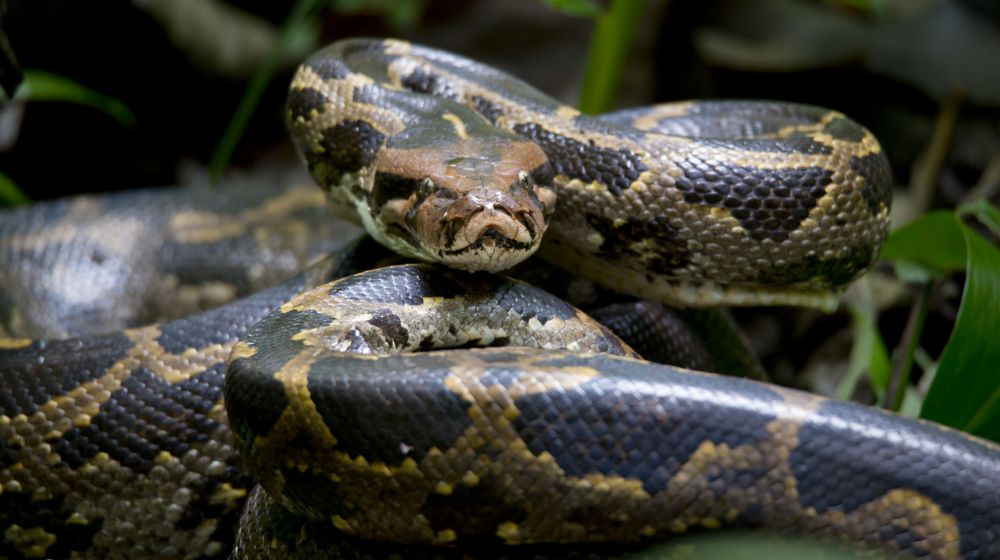
Worried about the Mall of Louisiana’s escaped 12 foot python? Here’s everything you need to know about the incident, as well as a few bonus facts about Burmese pythons in general.
RELATED: Venomous Snakes Of North America
12 Foot Python Escape | What You Need to Know
Did a Burmese Python Escape in the Mall of Louisiana?
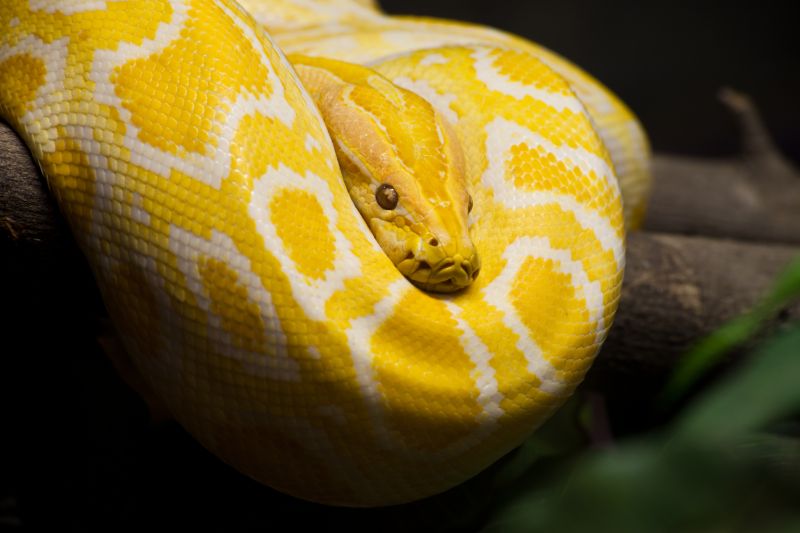
Yes, the stories are true. Last July 5, a 12 foot python escaped from its enclosure at the Blue Zoo found inside the largest shopping mall in Louisiana.
The yellow and white Burmese python named Cara slithered out of its home early Tuesday morning. Authorities continued the search for the snake all through the night, the time of day when this particular breed of pythons is said to be most active.
The Blue Zoo called in several snake experts, local firefighters, and police to aid in their search for the missing snake. They also purchased night vision cameras and motion sensor cameras that will help them locate the missing animal.
The management of the “interactive aquarium” Blue Zoo assured shoppers and residents that Cara was a friendly, non-poisonous snake. According to them, the python enjoys her interactions with guests in their Snake Education Shows.
The escape of the snake prompted the closure of the zoo. The Mall of Louisiana itself, however, remained open to the public.
Did They Find the Snake in the Mall of Louisiana?
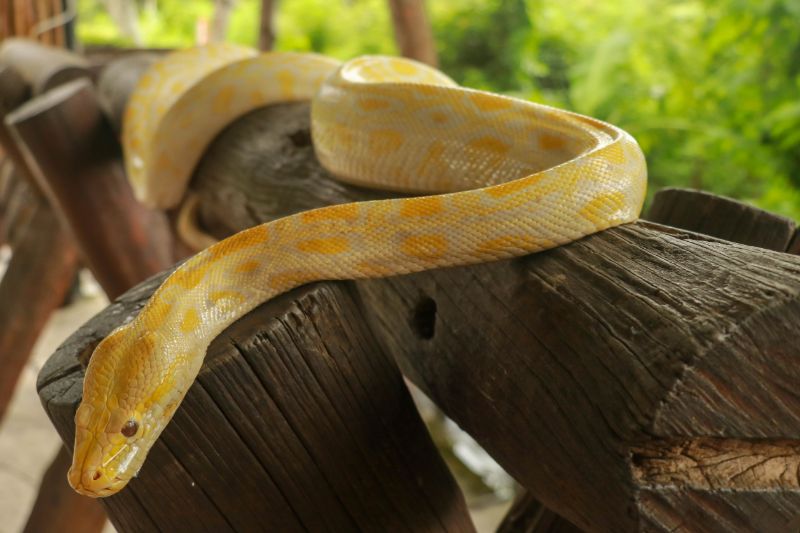
Fortunately, after 2 days of searching, the 12 foot long Burmese python was found safe and healthy. She was exactly where searchers thought she would be – in a space on the ceiling.
A video of the search and the discovery was posted on the Facebook page of Blue Zoo. It showed a worker carrying the reptile out of a hole cut into a wall. The exact location of where Cara was found was not disclosed to the public.
Workers of the aquarium believe that she escaped the exhibit through brute force. They speculate that the python bent through a corner of her tank, squeezing through until she got out.
Cara has since been returned to the exhibit.
RELATED: Survive Snake Bites With This Helpful Infographic
What is a Python?
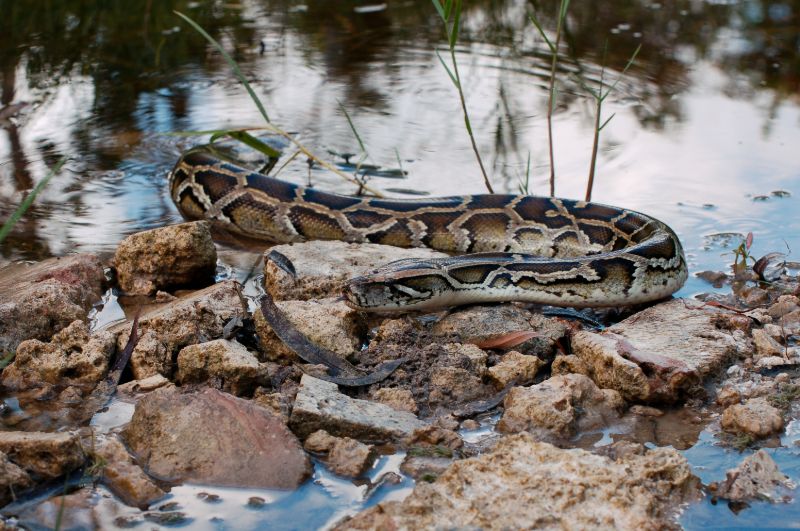
The 12 foot python Cara was a Burmese python. This particular species of pythons have beautifully-patterned skins, and are known to grow at a rapid rate. They are known to be the pet snake of choice among reptile enthusiasts.
Burmese pythons are native to grasslands, marshes, swamps, rocky foothills, river valleys, woodlands, and in the jungles of Southeast Asia. They are one of the largest snakes on Earth, alongside the reticulated python and the green Anaconda.
These snakes typically have a tan coloration. They are also covered with dark brown blotches and often have a black edge running along its sides and back. These patterns and blotches look similar to puzzle pieces and may also resemble the markings found on giraffes.
This pattern is one of the main reasons behind their popularity among reptile owners. They also look like the patterns found on African rock pythons, which leads to the confusion between the 2 species.
Young Burmese pythons typically spend much of their time up on trees. As they grow, however, their size and weight can make it difficult, if not impossible, for them to climb. They are then seen more often on the ground for the duration of their lives.
Burmese pythons are also known for being excellent swimmers. They can remain underwater for as long as 30 minutes at a time before needing to surface for air.
Is a Python Snake Dangerous?
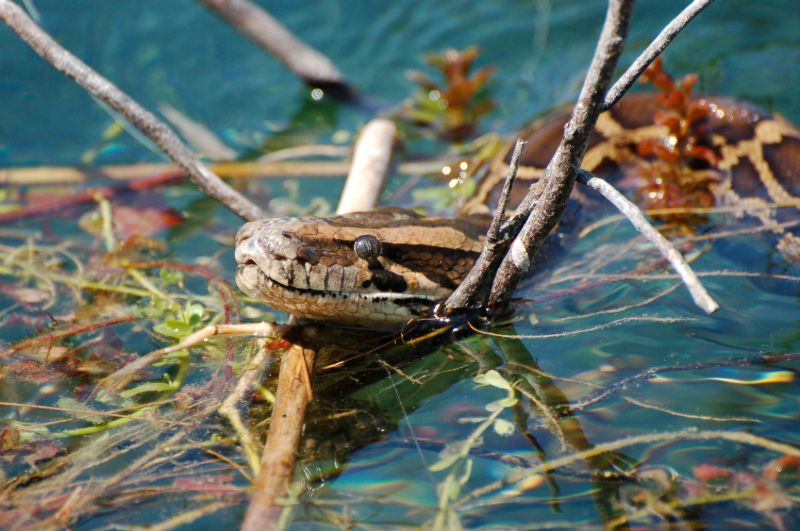
Burmese pythons are large, non-venomous, and carnivorous snakes. They kill their prey, which includes birds, mammals, and other reptiles, by constricting them. Fortunately, their risk of attacking humans are relatively low.
Younger Burmese pythons prey on smaller animals like rats, frogs, lizards, birds, fish, and even other snakes. Once they grow, however, they are capable of consuming prey as big as a deer or a pig.
Burmese pythons have very poor eyesight. They stalk their prey with chemical receptors found in their forked tongues, as well as heat-sensors along their jaws.
They often hunt at night, ambushing their prey with a “sit and wait” technique. Unsuspecting prey often fall victim to the snake, as it lies still in the water, waiting for its food to be close enough for it to strike.
It then bites its victim with its sharp teeth, hanging on to it and slowly wrapping its body around the animal. It then squeezes its prey, suffocating it until it dies.
Burmese pythons consume their food whole as they are able to stretch their mouths using the stretchy ligaments on their jaws. Fortunately, these snakes rarely eat, consuming only an amount of food equal to their own body weight in a year.
What is the Lifespan of a Python?
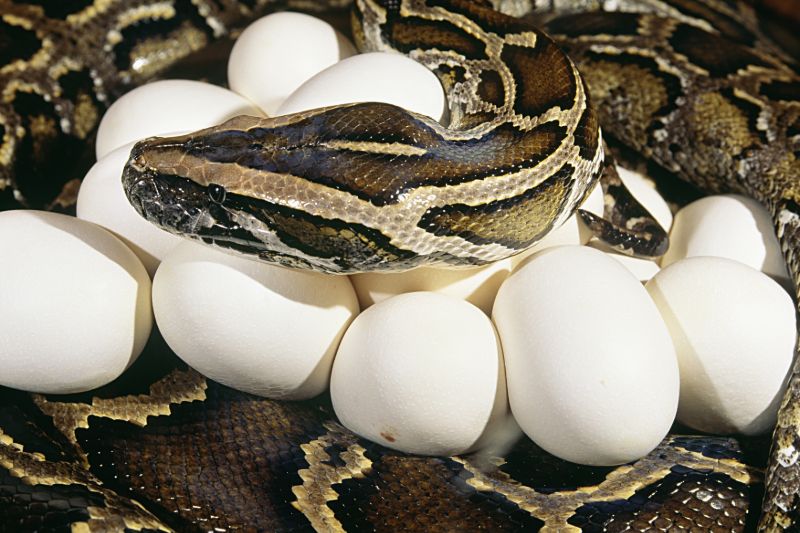
In the wild, Burmese pythons typically have a lifespan of about 20 to 25 years. In captivity, however, these snakes often lack the care they need. Once they age, their owners would often release them back into the wild.
These snakes are solitary. They are seen with other Burmese pythons only during their mating season in spring. Females can lay as much as 100 eggs, which they incubate for about 2-3 months.
Because of the depletion of their habitat, the demand for them in the exotic pet trade, and the continuous hunting for them for their flesh and skin, Burmese pythons are now considered endangered animals.
Want to know more about the escaped 12 foot python at the Mall of Louisiana? Check out how they recaptured it with this video courtesy of KATC:
Visitors of the Mall of Louisiana can rest easy knowing that the 12 foot python has been safely returned to its habitat in the Blue Zoo. While these magnificent creatures are not known to attack humans, it is best to leave them in their natural habitats untouched as they are more than capable of squeezing the life out of us.
[poll id=”98″]
Do you have other questions about the 12 foot python that escaped from the Blue Zoo in the Mall of Lousiana? Ask them in the comments section below!
Up Next:
- Wild Animal Attacks | What To Do When Attacked By Ferocious Beasts
- Survival Food | How To Catch, Cook, & Eat Snakes For Survival
- U.S. Beef Shortage Adds To The U.S. Becoming A 3rd World Nation
Calling all preppers, craftsmen, bushmasters, outdoorsmen, and all-around skilled people, Survival Life needs YOU! Click here if you want to write for us.
Don’t forget to stay connected with us on Facebook, Twitter, Pinterest, and Instagram!
-

 Do It Yourself7 months ago
Do It Yourself7 months agoParacord Projects | 36 Cool Paracord Ideas For Your Paracord Survival Projects
-

 Do It Yourself9 months ago
Do It Yourself9 months agoHow To Make Paracord Survival Bracelets | DIY Survival Prepping
-

 Do It Yourself9 months ago
Do It Yourself9 months ago21 Home Remedies For Toothache Pain Relief
-

 Do It Yourself10 months ago
Do It Yourself10 months agoSurvival DIY: How To Melt Aluminum Cans For Casting
-

 Exports8 months ago
Exports8 months agoAre Switchblades Legal? Knife Laws By State

